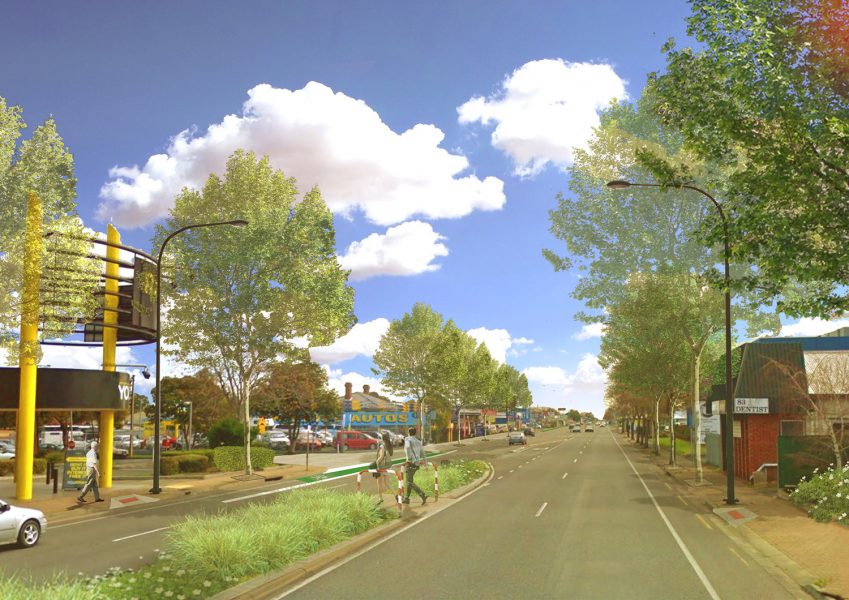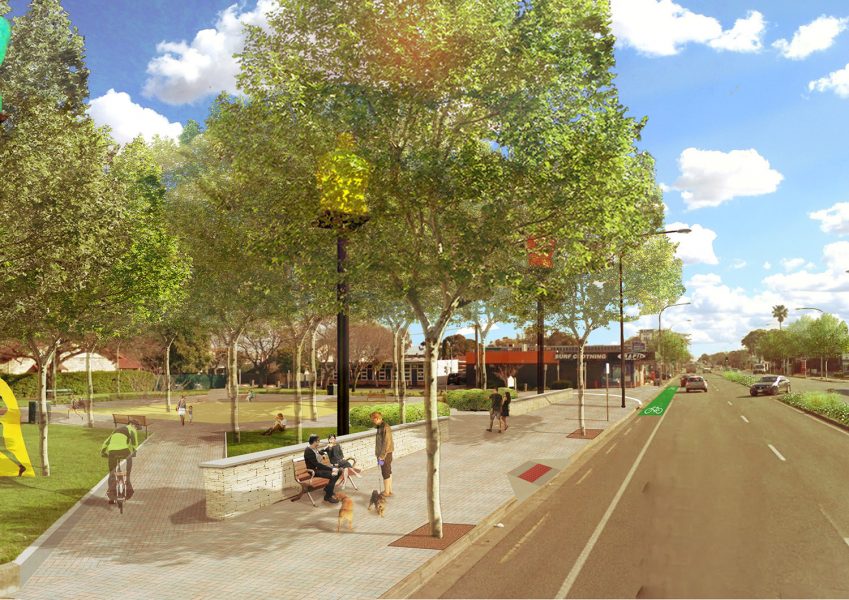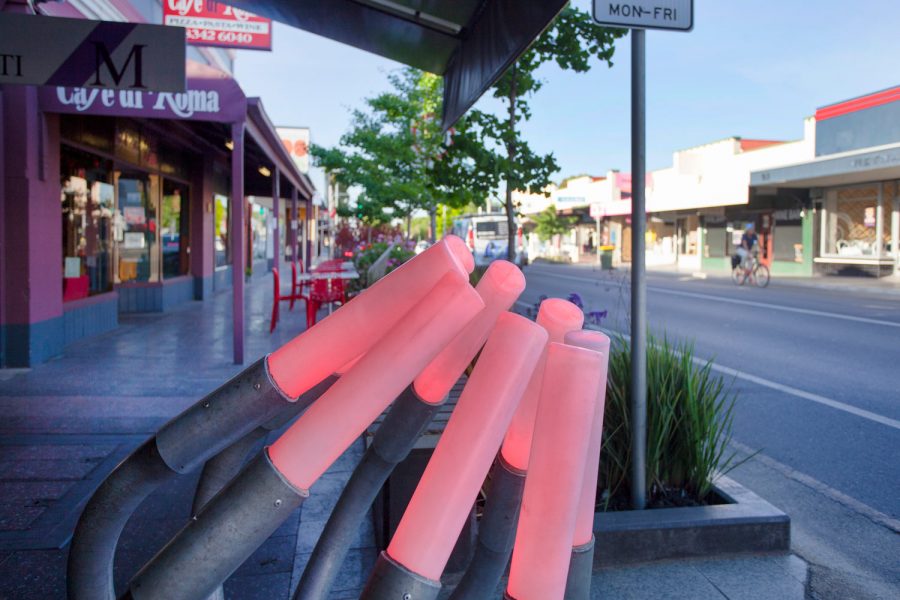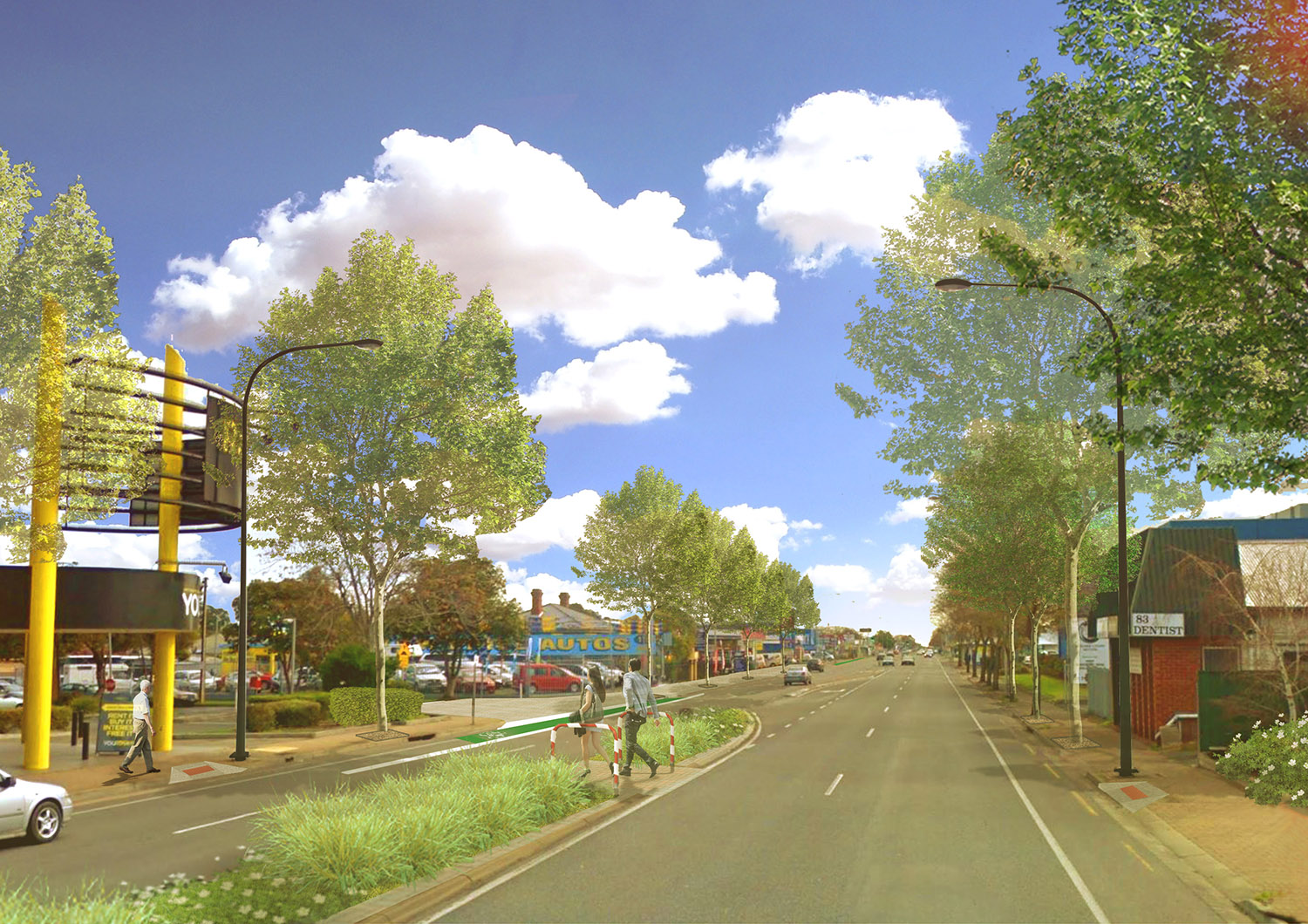Making main roads into main streets

The challenge is all too common: how to revive inner-city arterial roads suffocating with high noise levels and low amenity?
Jensen PLUS’ Sandy Rix has spent much of his career combining urban planning with economics. As Project Director for the Bowden development master plan, North Terrace redevelopment, as well as time spent with Renewal SA working on new urban and economic areas along the Riverbank, Sandy has a strong grasp of the economic impacts of urban planning initiatives.
We asked him about the cross-council work he has recently done for the City of Prospect and the City of Walkerville at Main North Road and North East Road. Each carries roughly 50,000 vehicles per day; the opportunity is to attract investment back to these corridors as the economy changes, so that these roads can contribute more to the local economy – think jobs and rates – and contribute to servicing the surrounding neighbourhoods.
What particular challenges do main (arterial) roads pose?
“Firstly it’s important to recognise that no two main roads are the same. But there are generally some common challenges that stem from inner city established arterials with high volumes of traffic. These roads can often lack footpath width as this has been taken to accommodate vehicle movements. This can result in few street trees and pedestrian safety concerns. Properties become under-utilised and poorly maintained and the amenity in terms of street furniture is poor.
Opportunities do exist but are sometimes hard to identify. In some areas block sizes are larger, possibly with rear lane access and excellent exposure. Accessibility is generally good for workers with frequent public transport options. Plus, there is often the opportunity for development with side street orientation onto leafy residential streets, so it’s not all bad news. It’s important to consider the attributes of a specific road in detail and target the actions accordingly.”
Why is economic development such a key part of the solution for main roads?
“In my view it’s because the ‘build it and they will come’ approach is simply not a viable solution any longer, and it’s far too risky for Councils’ budgets. Public realm improvements are certainly part of the mix to change the dynamic of arterial roads, but linking public realm investment to private sector investment nodes is the real key to success. It’s urban design PLUS investment attraction, and this is where it helps to have a pro-active Council with a strong focus on economic development.”
What do you consider to be the key essentials for a successful ‘main street’ arterial?
”Firstly it’s important to have an anchor. This could be one of many things such as a school or university, or a hospital or a cluster of similar businesses that act as a drawcard for more business. Secondly, and not surprisingly, it’s important to have a high-quality public realm. Prospect have committed to a ‘Green Corporate Boulevard’ for Main North Road. Thirdly, network connections are critical. These need to be in the form of technical connections such as high-quality internet capabilities, AND social connections amongst the local business community.”

How did you go about developing an Action Plan for Main North Road?
“The task is really to transfer economic development principles to a low amenity corridor. At the start it was a matter of getting right down in the detail, looking at each street block of properties to identify the current land uses, identify the existing and potential clusters that can attract investments and even to identify individual owners capable of creating these new investment clusters. It’s essentially understanding what you have so that you can match property investment opportunities and willing sellers with potential investors; then link this with capital works spending on the public realm to make meaningful improvements over time.
Public investment in Churchill Road, Walkerville Terrace and Prospect Road has resulted in private investment many times greater when targeted in this way. The end result is that we created – with the City of Prospect and the City of Walkerville – an Investment Attraction Strategy and an Action Plan that will be pursued through their Economic Development teams, matching and promoting willing seller and investor opportunities in the best locations on these roads.”
What would you consider to be the measures of success for these roads in the future?
“It can be tough challenge to convert arterial roads into modern main streets, and clearly these are long term initiatives for the Councils involved so it would be unrealistic to expect quick wins. If the Councils can use this as an opportunity to expand their rate base, take advantage of new economies such as health and defence to create new nodes or clusters, and make improvements to the public realm that are underpinned by private investment, they will end up with main roads that are perceived as assets to the surrounding communities. The measures of success will be a better looking street with clusters of similar higher density ‘new economy’ uses, used more by the locals, with property values appreciating more quickly. These measures can be seen ‘on the ground’ in Jensen PLUS’ work at Goodwood Road, Prospect Road and Churchill Road.”


